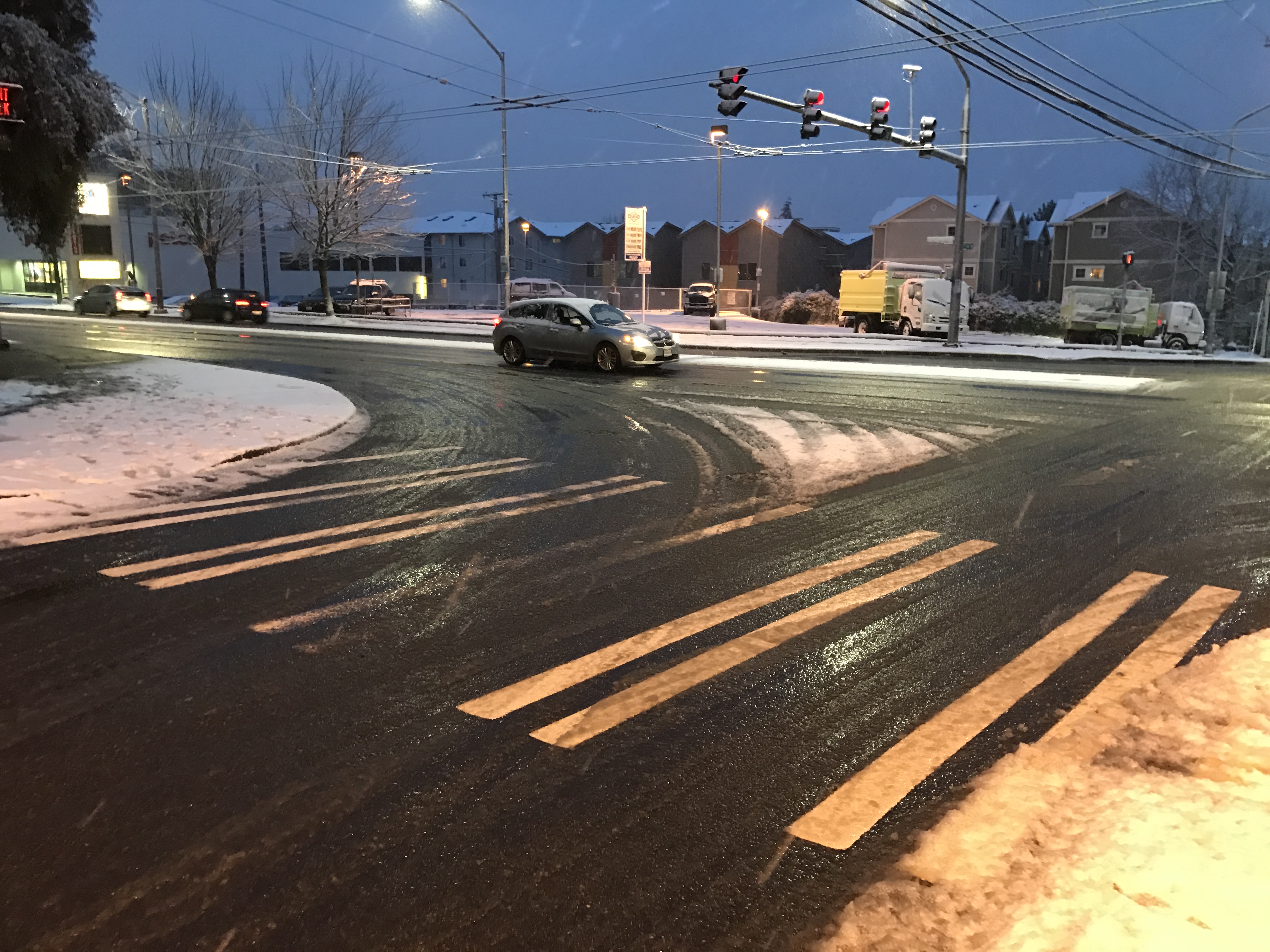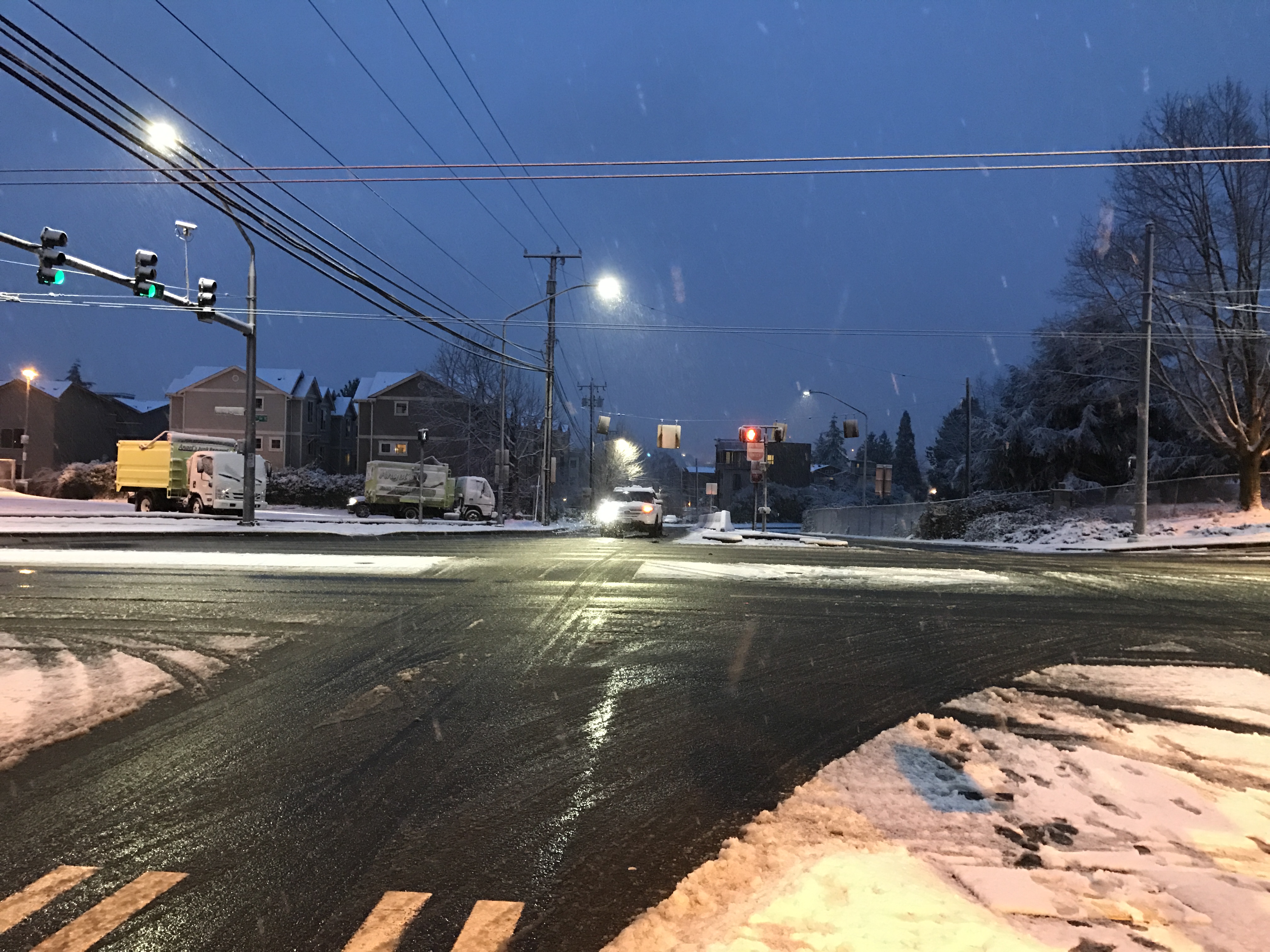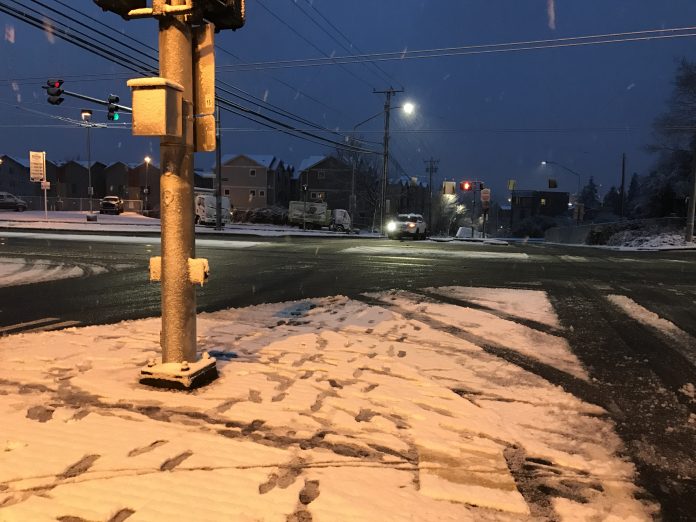Every once in a blue moon, Seattle gets a good snow that tells us a lot about how people are and aren’t using our streets. Snow graceful leaves its trace of what’s been stomped on and left completely untouched. The untouched traces in the street are particularly telling about what space people driving are not using (known as sneckdowns) or don’t need, space that could be reclaimed for safer streets.
On my walk to my bus stop this morning, I saw many streets where people driving had made considerably tighter turns around curbs than normal, which points to less need for wide curb radiuses. In other words, curb to curb, streets could be smaller. But the most pronounced case was when I got to the I-5, NE 45th St, and 7th Ave NE interchange where there were ample sneckdowns to be seen.
I frequent a stop there and often find the safety of crossing from north to south and vice versa a seriously precarious adventure. The northern crossing east-east is also fairly dangerous with turning vehicles headed onto I-5. The Washington State Department of Transportation, which largely owns the expansive right-of-way, would be wise to invest in new safety improvements to reduce collision and eliminate the chance for pedestrian injuries and deaths. As the images below show, the snow tells us where some concrete, paint, and flexible posts could go to improve the safety of the street for pedestrians, bicyclists, and motorists.



What sneckdowns have you seen today in your neck of the woods?
Stephen is a professional urban planner in Puget Sound with a passion for sustainable, livable, and diverse cities. He is especially interested in how policies, regulations, and programs can promote positive outcomes for communities. With stints in great cities like Bellingham and Cork, Stephen currently lives in Seattle. He primarily covers land use and transportation issues and has been with The Urbanist since 2014.



